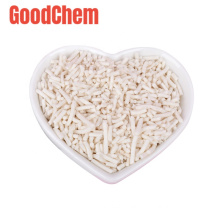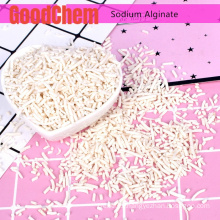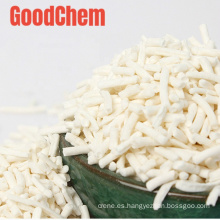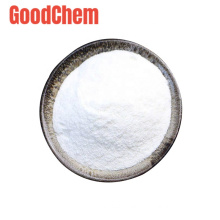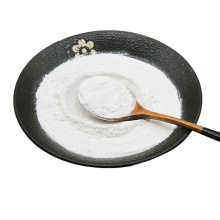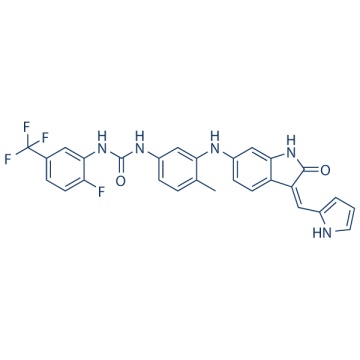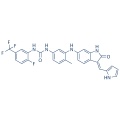GNF-5837 1033769-28-6
Descripción del producto
.cp_wz tabla {borde superior: 1px sólido #ccc; borde izquierdo: 1px sólido #ccc; } .cp_wz table td {borde derecho: 1px sólido #ccc; borde inferior: 1px sólido #ccc; padding: 5px 0px 0px 5px;} .cp_wz table th {border-right: 1px solid #ccc; border-bottom: 1px solid #ccc; padding: 5px 0px 0px 5px;} \ n Peso molecular: 535.49 GNF-5837 es un inhibidor de pan-TRK selectivo y biodisponible por vía oral para TrkA y TrkB con IC50 de 8 nM y 12 nM, respectivamente. \ n Actividad biológica
Protocolo (solo como referencia) Ensayo de quinasa: [1]
Ensayo celular: [1]
Estudio con animales: [1]
Conversión de diferentes modelos de animales basados en BSA (valor basado en datos del Borrador de Directrices de la FDA)
Por ejemplo, para modificar la dosis de resveratrol utilizada para un ratón (22,4 mg / kg) a una dosis basada en el BSA para una rata, multiplique 22,4 mg / kg por el factor Km para un ratón y luego divida por el factor Km para una rata. Este cálculo da como resultado una dosis equivalente para ratas de resveratrol de 11,2 mg / kg.
Información química
| Description | GNF-5837 is a selective, and orally bioavailable pan-TRK inhibitor for TrkA, and TrkB with IC50 of 8 nM, and 12 nM, respectively. | |||||
|---|---|---|---|---|---|---|
| Targets | TrkC [1] | TrkB [1] | TrkA [1] | PDGFRβ [1] | Kit [1] |
   View More |
| IC50 | 7 nM | 9 nM | 11 nM | 0.87 μM | 0.91 μM | |
| In vitro | In Ba/F3 cells overexpressing the constitutively active Tel-TRKC fusion, GNF-5837 shows potent anti-Trk activity and potent antiproliferation activity with IC50 of 0.042 μM. | |||||
| In vivo | In both male Balb/c mice and Sprague–Dawley rats, GNF-5837 has the low drug clearance, and moderate biovailability. In mice bearing Rie xenografts expressing TrkA and NGF, GNF-5837 (100 mg/kg/d p.o.) significantly inhibits tumor growth. | |||||
| Features |
|
|||||
| Inhibition of biochemical TrkA, TrkB and TrkC | TrkA and TrkC biochemical assays are carried out by HTRF method. The reaction mixtures contains 1 μM peptide substrate, 1 μM ATP, and either 1.8 nM TrkA or 34 nM TrkC in the reaction buffer (50mM HEPES pH 7.1, 10mM MgCl2, 2 mM MnCl2, 0.01% BSA, 2.5 mM DTT and 0.1 mM Na3VO4) at a final volume of 10 μL. All reactions are carried out at room temperature in white ProxiPlate™ 384-well Plus plates and are quenched with 5 μL of 0.2 M EDTA at 60 min. Five μL of the detection reagents (2.5 ng PT66K and 0.05 μg SAXL per well) are added, the plates are incubated at room temperature for 1 h and then read in EnVision reader. Compounds are diluted into assay mixture (final DMSO 0.5%), and IC50 values are determined by 12-point (from 50 to 0.000282 μΜ) inhibition curves in duplicate under the assay conditions. TrkB biochemical assay is carried out by caliper microfluidic method. The reaction mixtures contained 1 μM peptide substrate, 10 μM ATP, and 2 nM TrkB in a reaction buffer containing 100 mM HEPES, pH 7.5, 5 mM MgCl2, 0.01% Triton X-100, 0.1% BSA, 1 mM DTT, 10 μΜNa3VO4, and 10 μΜBeta-Glycerophosphate. The reactions are carried out at room temperature for 3 hrs, and the products are determined by Caliper EZ-reader. Compounds are diluted into assay mixture (final DMSO 1%), and IC50 values are determined by 12-point (from 50 to 0.000282 μΜ) inhibition curves in duplicate under the assay conditions. |
|---|
| Cell lines | Wt Ba/F3 cells and Ba/F3 cells transformed with constitutively expressed luciferase reporter and BCR-ABL or Tel-KDR or other Tel fusion kinases |
|---|---|
| Concentrations | ~10 μΜ |
| Incubation Time | 48 hours |
| Method | Compounds are tested for their ability to inhibit the proliferation of wt Ba/F3 cells and Ba/F3 cells transformed with constitutively expressed luciferase reporter and BCR-ABL or Tel-KDR or other Tel fusion kinases. Parental Ba/F3 cells are maintained in media containing recombinant mouse IL3 and the kinase transformed Ba/F3 cells are maintained in media without IL-3. 7.5 nL of compounds are spotted to each well of 1536-well assay plates by Liquid handling System Echo 555 (Labcyte). 700 cells are then plated into each well of the assay plates in 7 μL culture media per well and compounds are tested at 0.17 nM to 10 uM in 3-fold serial dilutions. The cells were then incubated for 48 hours at 37 °C. 3 μL of Bright-Glo® is added to each well and the plates are read using ViewLux. |
| Animal Models | Mice bearing Rie xenografts expressing TrkA and NGF. |
|---|---|
| Formulation | 75% polyethylene glycol 300 (PEG300) and 25% of dextrose (5 mg/ml) |
| Dosages | 100 mg/kg/d |
| Administration | p.o. |
| Species | Baboon | Dog | Monkey | Rabbit | Guinea pig | Rat | Hamster | Mouse |
| Weight (kg) | 12 | 10 | 3 | 1.8 | 0.4 | 0.15 | 0.08 | 0.02 |
| Body Surface Area (m2) | 0.6 | 0.5 | 0.24 | 0.15 | 0.05 | 0.025 | 0.02 | 0.007 |
| Km factor | 20 | 20 | 12 | 12 | 8 | 6 | 5 | 3 |
| Animal A (mg/kg) = Animal B (mg/kg) multiplied by | Animal B Km |
| Animal A Km |
| Rat dose (mg/kg) = mouse dose (22.4 mg/kg) × | mouse Km(3) | = 11.2 mg/kg |
| rat Km(6) |
| Molecular Weight (MW) | 535.49 |
|---|---|
| Formula |
C28H21F4N5O2 |
| CAS No. | 1033769-28-6 |
| Storage | 3 years -20℃Powder |
|---|---|
| 6 months-80℃in solvent (DMSO, water, etc.) | |
| Synonyms | N/A |
| Solubility (25°C) * | In vitro | DMSO | 100 mg/mL (186.74 mM) |
|---|---|---|---|
| Water | <1 mg/mL ( | ||
| Ethanol | 9 mg/mL heating (16.8 mM) | ||
|
* <1 mg/ml means slightly soluble or insoluble. * Please note that Selleck tests the solubility of all compounds in-house, and the actual solubility may differ slightly from published values. This is normal and is due to slight batch-to-batch variations. |
|||
| Chemical Name | N-[3-[[2,3-dihydro-2-oxo-3-(1H-pyrrol-2-ylmethylene)-1H-indol-6-yl]amino]-4-methylphenyl]-N'-[2-fluoro-5-(trifluoromethyl)phenyl]-urea |
|---|
Grupos de Producto : Proteína tirosina quinasa > Inhibidor del receptor Trk
Otros productos
Productos hot
Astragalósido AClortetraciclina HCl 64-72-2Paclitaxel 33069-62-4Acetato de dexametasona 1177-87-3Dinaciclib (SCH727965) 779353-01-4CHIR-124 405168-58-3Ro3280 1062243-51-9TAME 901-47-3CCG-1423 285986-88-110058-F4 403811-55-2Dabigatrán (BIBR 953) 211914-51-1H 89 2HCl 130964-39-5T0901317 293754-55-9Aprepitant 170729-80-3Turofexorate Isopropil (XL335) 629664-81-9BMS-378806 357263-13-9
